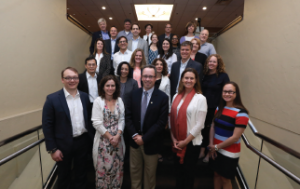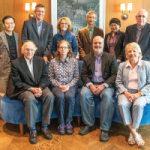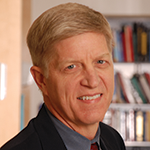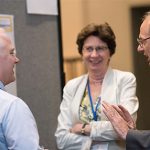
Attendees of the Rheumatology Research Foundation’s 2017 Investigators’ Meeting.
The Rheumatology Research Foundation hosted the 10th Annual Investigators’ Meeting in St. Louis, June 24–25. The meeting provides Foundation-funded investigators an opportunity to learn about recent findings and research projects, network, exchange ideas and collaborate on future projects. More than 30 rheumatology professionals were in attendance, with presentations from 21 investigators.
James O’Dell, MD, professor at the University of Nebraska Medical Center and Investigators’ Meeting attendee, explains the importance of providing a community for investigators where they can share successes and lessons learned. “No one in academic research is successful without a network,” says Dr. O’Dell.
At this year’s Investigators’ Meeting, a special panel of industry leaders discussed partnerships and collaboration in the search for a cure. Panelists emphasized the importance of academic research and independent investigators in making early discoveries that later develop into new treatments. To encourage future collaborations, they also advised attendees on the best practices for developing partnerships with industry leaders.
Jarred Younger, PhD, associate professor at the University of Alabama at Birmingham, delivered a presentation on his work. Dr. Younger’s project is titled, Brain Thermometry: a noninvasive method for detecting neuroinflammation in rheumatoid arthritis (RA). His work seeks to better understand the impact that rheumatoid arthritis has on the brain and nervous system, which could explain why approximately half of RA patients experience fatigue and pain, even after their joint disease activity has been improved by medications.
Teresa Tarrant, MD, of Duke University, discussed her work with light-mediated delivery of therapeutics for RA. She is designing new technology that would deliver RA medication directly to the joint using wavelengths of light to release the medication. By using directed laser light on inflamed joints, Dr. Tarrant’s technology could minimize the risks and side effects of RA medications.
Learn more about other projects currently funded by the Foundation.


